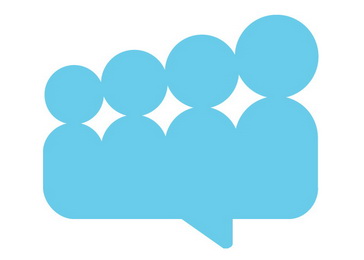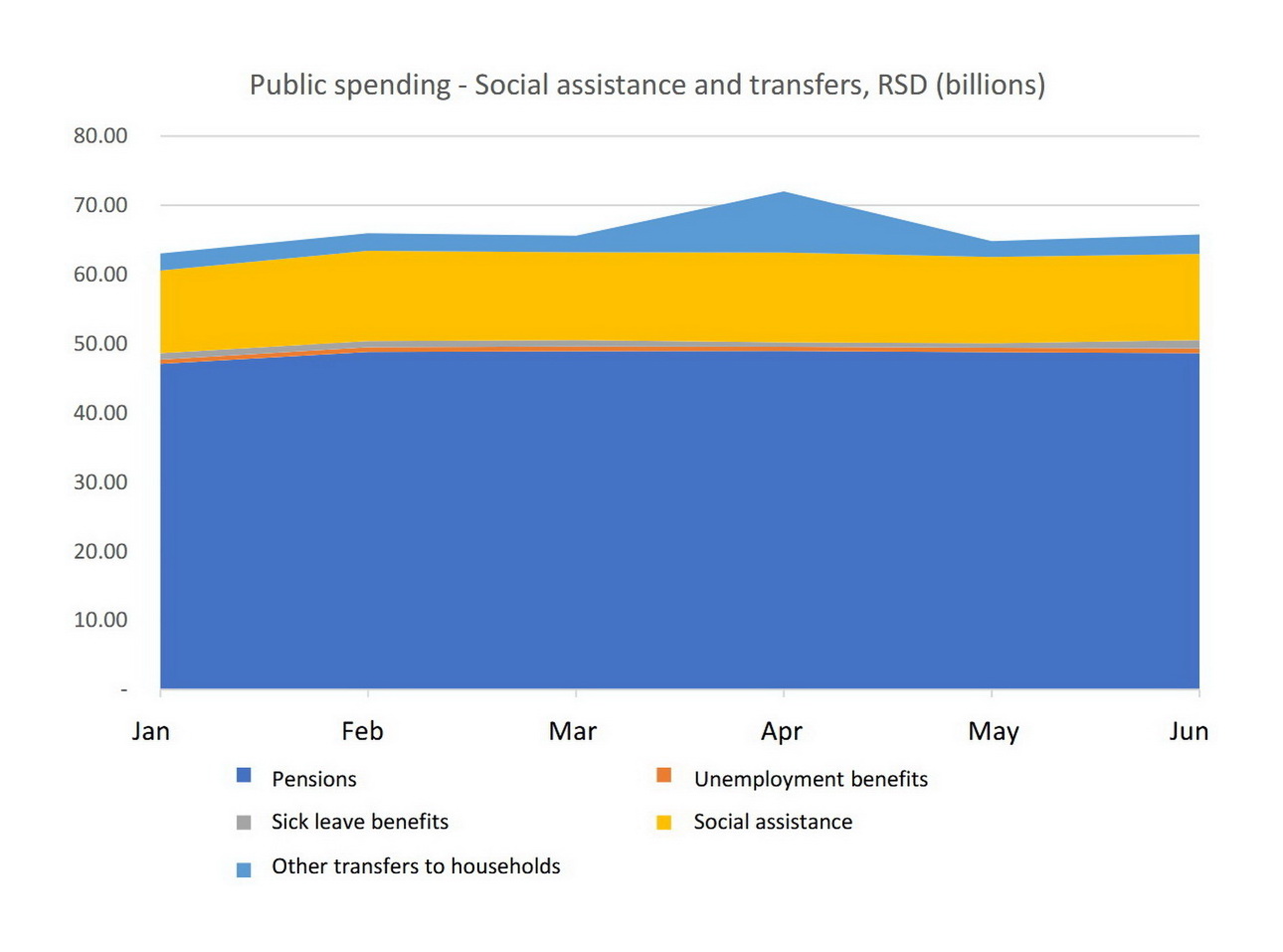 Assessment of absolute poverty trends
Assessment of absolute poverty trends
According to the early data of the Statistical Office of the Republic of Serbia, like in the previous years, there was no increase in the absolute poverty rate in 2019. The absolute poverty rate stood at 7% in 2019, which means that around 480 thousand people were unable to satisfy basic needs. No statistically significant changes were registered in terms of either an increase or a decline in the absolute poverty rate in relation to previous years.
According to the type of settlement, poverty remains more prevalent in non-urban areas, with notable regional disparities (e.g. poverty is three times less prevalent in the Belgrade Region than in the Region of Southern & Eastern Serbia). A breakdown by age reveals that the poverty rate is above average among children, youth, and the elderly (65+). A breakdown by sex reveals that 7.2% of women are poor, compared to 6.9% of men in the same status.
Education and labour market status are the most important factors affecting poverty in a household. Poverty is 4.5 times less prevalent in households where the head of the household has at least secondary education, than in households where the head of the household has incomplete primary education. Where the head of the household has secondary education, the incidence of absolute poverty is more than 17 times lower than in households where the head of the household lacks primary school education. Comparing to 2018, the absolute poverty rate in 2019 was in slight decline among people living in households where the head of the household participates in the labour market (regardless of whether they are self-employed, employed, or unemployed). Persons living in households where the head of the household is outside the labour market (inactive), as well as those living in households where the head of the household is a pensioner had a higher absolute poverty rate in 2019 relative to 2018.
Assessment of the relative poverty, income, and wage trends
Data of the Statistical Office of the Republic of Serbia (SORS) reveal a decline in the share of people at risk of poverty by 1.1 percentage points (23.2% in 2019 relative to 24.3% in 2018), which means that around 1.6 million people were at risk of poverty in 2019. The at-risk-of-poverty-or-social-exclusion (AROPE) rate was also lower in 2019 (31.7% compared to 34.3% in 2018) and is at the level of some EU Member States (such as Greece, Bulgaria and Romania). In 2019, the at-risk-of-poverty (AROP) threshold[1] was RSD 19,381 per month per equivalent adult. The share of the population concurrently at risk of poverty and in severe material deprivation stood at 8.9%.
According to the Statistics on Income and Living Standards (SILC) survey, the annual median income (the median income is the income of the so-called “middle” individual, i.e. the point of the income scale which divides the population into two equal groups, with individuals in one half of the population earning less and in the other half more than the median income) in 2019 grew by as much as 16.6% in nominal terms relative to the SILC of 2018[2]. In the same period, the Household Budget Survey (HBS) recorded a 3.8% growth in the average in cash and in kind monthly income as well as a 3.5% increase in individual household consumption, in nominal terms. According to the Ministry of Finance data, real net wages and pensions increased in the same period by 4.4% and 3.8%, respectively. In nominal terms, the net wages increased by 6.5%[3] in the considered period. As a reminder, SILC registered a significant share of households in the poorest decile with zero income (almost 30% of households in the first decile, SILC 2017), and possible improvements in capturing income statistics, especially of households with very low and zero income, were announced in expert meetings held between the expert community and the representatives of the Statistical Office in late 2018 and early 2019.
Assessment of administrative poverty trends
Pensions and social transfers (including the financial social assistance and child allowance) have a significant impact on reducing the at-risk-of-poverty rate. Without social transfers, the at-risk-of-poverty rate in 2019 would have been higher by five percentage points (28.3% relative to 23.2%), while without the joint effect of social transfers and pensions the at-risk-of-poverty rate would have been higher by twenty-tree percentage points (46.6% relative to 23.2%).
According to the Statistical Office of the Republic of Serbia (SORS), the number of families receiving financial social assistance declined (92,673 in 2019, compared to 98,754 in 2018) and so did the number of children eligible for child allowance (226,289 in 2019 relative to 225,886 in 2018). These two benefits are the most important types of support for the poor funded at national level. In the forthcoming period, it is important to consider increasing the coverage and amounts of social transfers to achieve an effective impact in terms of reducing poverty.
Trends in the number of recipients of child allowance and financial social assistance
| 2013 | 2014 | 2015 | 2016 | 2017 | 2018 | 2019 | |
| Number of child allowance recipients (aged 0-17) | 320,762 | 310,617 | 297,987 | 286,354 | 270,460 | 225,886 | 226,289 |
| Number of financial social assistance recipients (households) | 106,954 | 107,570 | 105,064 | 106,439 | 104,276 | 98,754 | 92,673 |
| Share of child allowance recipients in the total population of children | 24.8 | 24.3 | 23.3 | 22.6 | 21.3 | 17.6 | 17.7 |
| Share of financial social assistance recipients in the total population | 3.7 | 3.7 | 3.6 | 3.6 | 3.5 | 3.3 | 3.1 |
Source: DevInfo, Statistical Office of the Republic of Serbia
In absolute terms, the number of children receiving child allowance in the 2013-2019 period decreased by over 94,000 children, while the number of households receiving financial social assistance decreased by over 14,000.
Assessment of the impact of one-off universal measures implemented during the Covid-19 pandemic on key poverty indicators and assessment of the impact of targeted measures
The Social Inclusion and Poverty Reduction Unit conducted an assessment with aim to evaluate poverty trends during the pandemic in 2020 and provide insights into the impact of the relevant measures deployed by the Government of Serbia on budget spending on the one hand, and on key poverty and inequality indicators, on the other hand. The assessment is based on the data provided by the Survey on Income and Living Conditions (SILC 2017) and the Household Budget Survey (HBS 2018).
In addition to analysing the effects of the two direct individual income/consumption support measures implemented under the (1) Decree on the One-off Payment of EUR 100 to all Adults, and (2) Decision on the Award of RSD 4,000 to All Pensioners, the analysis also focused on the effects of 16 targeted measures, in order to compare their effects on expenditures (estimated total costs of the measures) and on the 4 key poverty and inequality indicators (the at-risk-of-poverty rate, the Gini coefficient, the quintile ratio, and the relative at-risk-of-poverty gap). The effects of each measure were also monitored by decile and changes in distribution across all 10 deciles of income/consumption were analysed. Targeted measures primarily refer to the benefits awarded to recipients of financial social assistance and child allowance, persons with disabilities, additional assistance to pensioners and the elderly who have a low monthly income, and to children in families with more than one child.
The disbursement of the one-off benefit in the amount of EUR 100 to all adult citizens of the Republic of Serbia was one of the key measures implemented by the Government. According to the Ministry of Finance data, a total of 6,145,529 adult citizens received this type of financial assistance, which cost the state RSD 72.3 billion.
This measure resulted in the reduction of the at-risk-of-poverty rate by 1.1 percentage points (from 25.7 to 24.6), according to the 2017 SILC survey data. Consequently, the measure also had an impact on the reduction of income distribution inequality. The Gini coefficient, as the most widely used indicator of income distribution inequality, dropped from 37.8 to 36.3, whereas the S80/S20 quintile ratio decreased by 1.3 (from 9.4 to 8.1). At the same time, the absolute poverty rate declined from 7.1% to 4% (according to the HBS for 2018, under the assumption that the entire amount of assistance received was used for consumption, which is realistic to assume for the poorest decile).
Analyses based on available data additionally confirmed that the same or similar effects on key living standard indicators could have been achieved at significantly lower costs for the budget, by implementing targeted measures. The 20% increase in the amounts of financial social assistance and/or child allowance for existing users during the state of emergency (3 months) is not sufficient to achieve a significant impact on poverty and inequality, regardless of whether poverty is considered in absolute of relative terms. The very low benefit amounts, far below the absolute as well as the relative poverty threshold, and the small number of recipients, corroborate these findings and indicate the need for increasing the amounts of these benefits as well as expanding the coverage in order to ensure an optimal protection of the vulnerable population through social transfers.
Assessment of the trends of expenditures on the protection of the most vulnerable population during the Covid-19 pandemic
According to the Ministry of Finance, during the state of national emergency (lockdown) introduced in response to the Covid-19 pandemic, expenditures on social assistance measures did not increase. The monthly expenditures in the first six months of 2020 were, on average, stable and amounted to RSD 12.6 billion. The only item in the “social assistance and transfers to the population” expenditure category that displayed characteristics of sensitivity to the crisis was “Other transfers to the population”, which registered an increase of over RSD 6 billion in April 2020, relative to the average monthly values in the first six months of 2020[4].
In the longer-term, the matter that raises concern is the trend of the expenditure levels within the Social assistance category. This category’s share in the GDP steadily decreased, from 3.9% of the GDP in 2015 to a mere 3.1% of GDP in 2019.
Download the documents:
- Assessment of the Trends of Poverty and Living Standard and the Response to the Impact of the Covid-19 Pandemic (.pdf)
- Assessment of the Trends of Poverty and Living Standard and the Response to the Impact of the Covid-19 Pandemic (.docx)
- Absolute Poverty 2006-2019 (.xlsx)
———–
[1] The value of the AROP threshold (relative poverty line) is set at 60% of median national equivalized disposable income and is expressed in dinars.
[2] The reference period for income is 2018, so the comparative analysis of income growth refers to income earned in 2017 and 2018.
[3] According to SORS data for the period 1 December 2018 – 1 December 2019, https://publikacije.stat.gov.rs/G2019/Pdf/G20191041.pdf
[4] According to Ministry of Finance data, Public Finance Newsletter, August 2020
 Government of the Republic of Serbia
Government of the Republic of Serbia
















 pdf [271 KB]
pdf [271 KB]
Leave a Comment